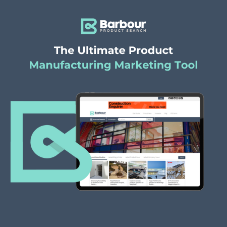94% of specifiers have experienced difficulties when producing or using specifications. This fact, from the NBS specification report, acts as a call for manufacturers to provide greater support.
Well written specification documents are a very important tool in the sales and marketing of construction products. Developing standard specification clauses provides a means of saving the specifier time, enabling easy inclusion and ensuring that a construction product is correctly described. That it is described to the architect or engineer’s original intention and the manufacturer’s original intention.
Why provide specification documents?
Providing Specifications documents makes it simpler for the construction design team to accurately specify your construction products. Saving them time and effort. It demonstrates how your construction product meets standards, sustainability, health and wellbeing benchmarks and is compliant with health & safety requirements. A robust specification serves all parties at all stages of the process, not requiring numerous ‘Requests for Information’.
In summary, developing standard specification clauses allows all members of the design team to understand the credentials of your construction product. Remember, although many on the design team may not be responsible for selecting your product, they potentially have the power to veto its use.
Where does the specification sit in the construction process?
The specification states what the contractor should build. The specification is a key document in the construction process. It will usually form part of the contract and be legally binding. And different forms of construction contract require different information to be provided in the specification.
In the future we can expect specification to become more digital. But in the 2017 NBS report only 34% said they thought BIM would replace specifications. Despite advances in technology, with 3D and 4D models, the specification is still important. Due to its detailed nature it links visual information together. It is a worded, instructional document that details what cannot be visualised or drawn. The specification contains the majority of the technical content.
What should a specification include?
The specification should include technical information about what the Contractor is required to provide, including measurements, quality, requirements to work with others, plans and drawings.
“Once you understand how important producing comprehensive specification is, then you understand the value that this brings to a project.”
Malcolm Brown, Technical Director, FaulknerBrowns. In an article for NBS
A typical specification document should contain:
• Manufacturer with all contact details
• Access to supplier network, if not direct
• Product Name and model numbers
• Materials, ingredients, recycled % or composites, grades/alloys
• Finish, Colour, Colour reference system (RAL BS), gloss level
• Surface textures, direction, natural variation limits,
• Products, accessories and system assemblies/build-ups
• Sizes, weights, density, other distinguishing properties
• Technical Performance (ISO, CEN, BS, BSI Kitemark, BBA, ETA, etc)
• Environmental and/or Health Performance
• Test evidence, Certificates, Accreditations, Labels
• Potential to gain BREEAM credits, or other certification equivalency
• Workmanship, Sequence, Tolerances
• Guarantee, scope, limits, years, provisos.
Take care that your specification is not incomplete, incorrect or ambiguous. Also review your specifications and all supporting material to avoid contradictions. Also bear in mind that with some products a single specification will not suit all applications and you will need to provide additional advice to help shape the specification to the application.
Writing standard specifications takes time and consideration. Yet the provision of standard specification clauses allows the tenderer to confidently price competitively. It also enables the design team to appreciate product features and multi-functionality, reducing the risk of your product being value engineered out of the design.
“Receiving key specification material from manufacturers and supplers is essential. Although we often re-write and/or reformat a manufacturer’s specification, they contain key technical information that could be overlooked if we complete the specification in isolation by ourselves.”
Malcolm Brown, Technical Director, FaulknerBrowns. In an article for NBS
Competitive Advantage can help you develop strong product specifications.
Download our datasheet on developing effective specification documents.
Join us for a Twitter Chat on this subject using #SpecStrategy at noon on Thursday 21st June.
The chat is an opportunity to ask experienced building product marketer Chris Ashworth (@CompA_Ashworth) and the team at Competitive Advantage (@CompetitiveA), for practical guidance on how to develop effective specification documents.
Further reading:
• Making the most of your construction specification documentation – an interview with Brian Murphy
• Case Study: Developing a Specification Sales Approach
• Learn more about Construction Product Specification Writing
Related Blog Articles



crop192.png)












